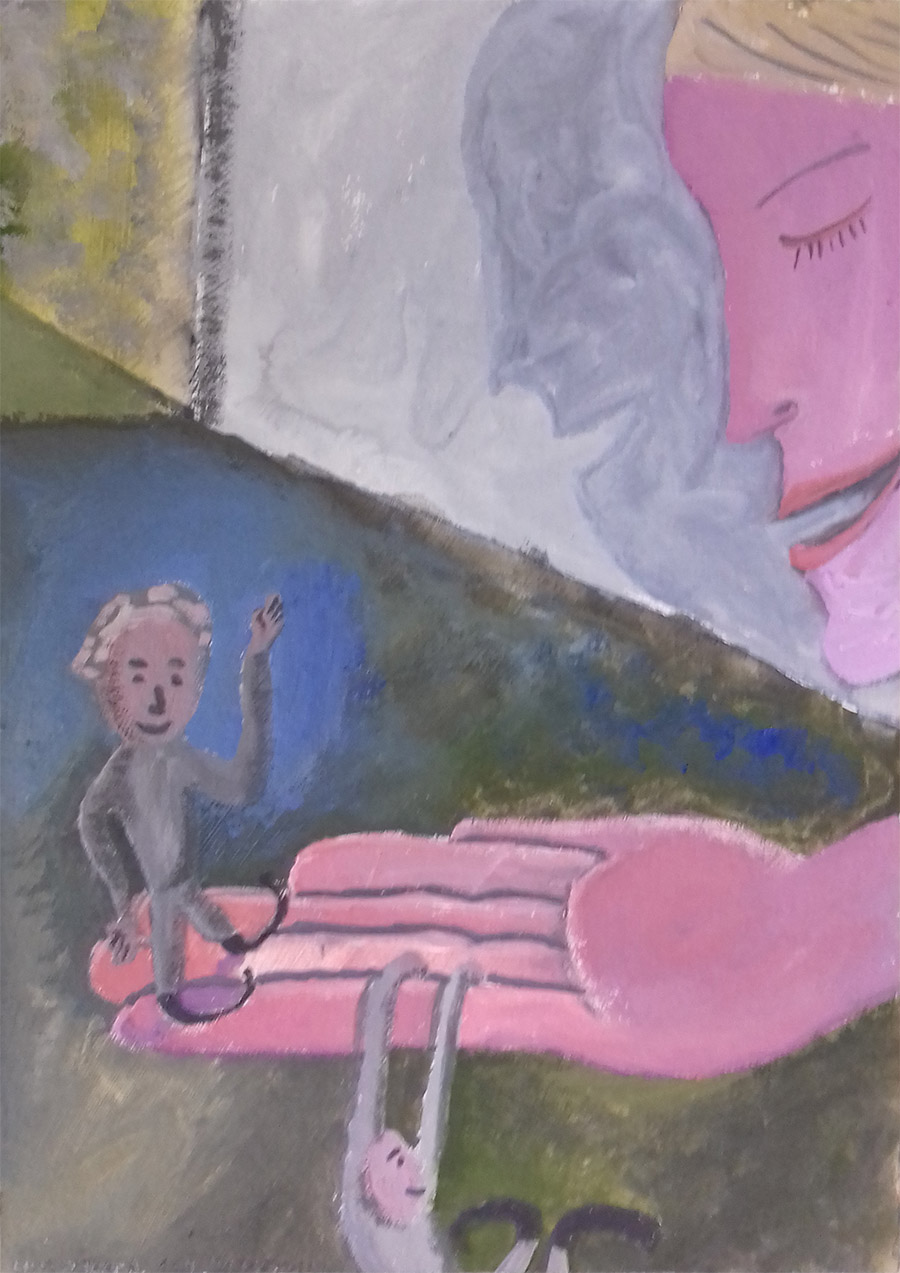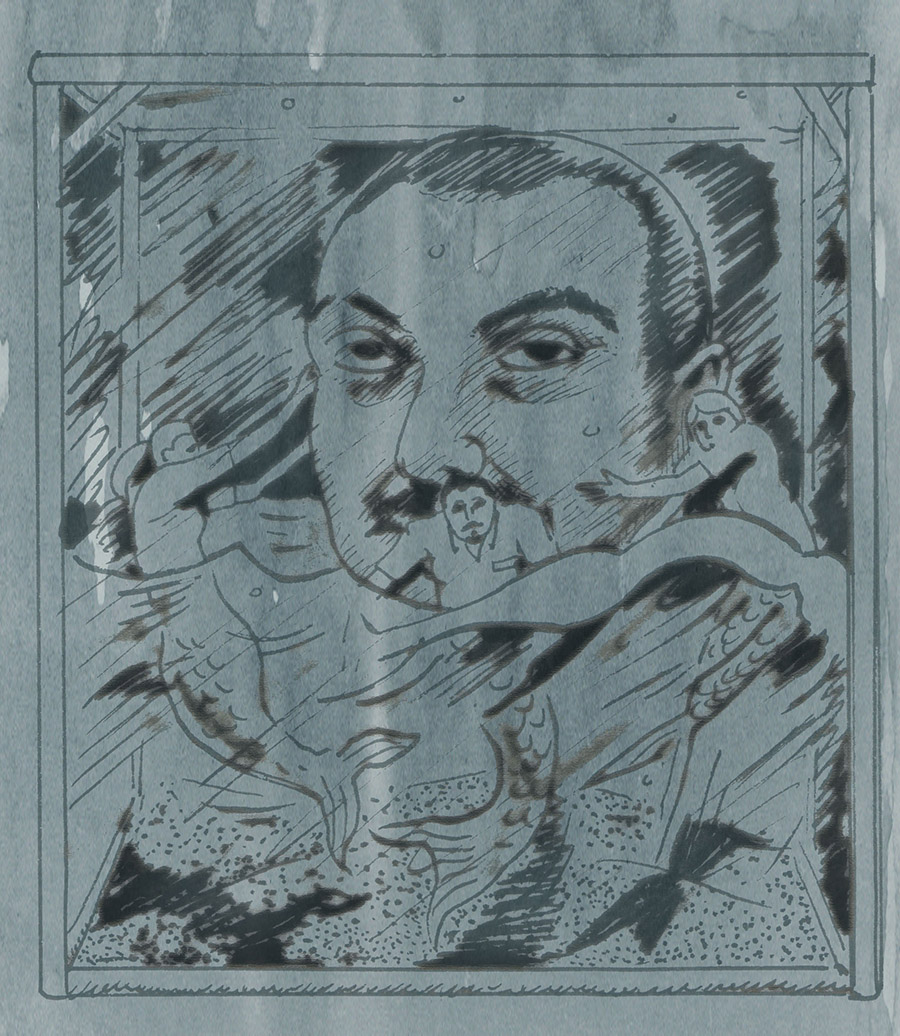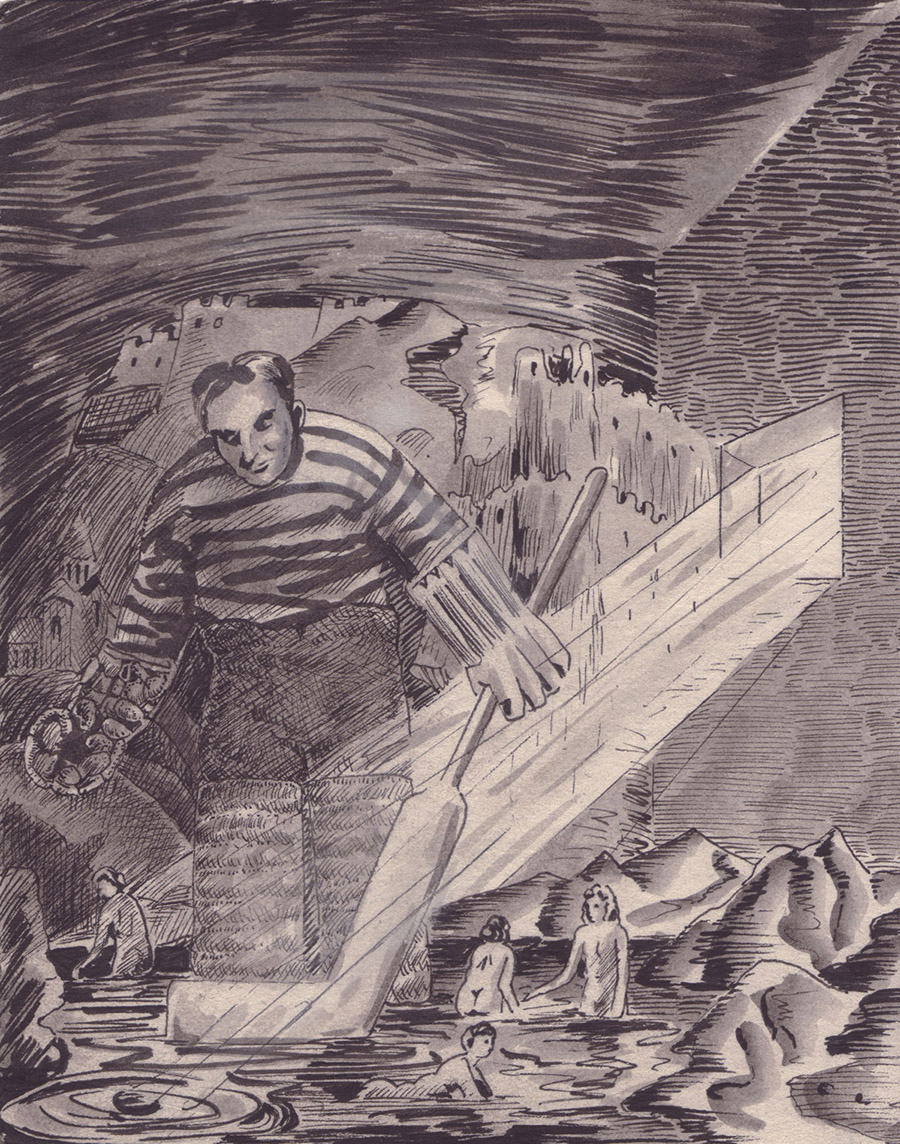Stockholm Surrealist Group
Life of the little ones
This is an example of a quasi-game of the Stockholm surrealist group, where we fail to really launch the game but eventually have to realise we’ve probably been playing all the time as we were stuck in our associational detours. A groping journey which could either be hidden under the table or offered for permanent record in the case files. It has been edited for the occasion, but of course we make no particular effort to hide our relative stupidity and irrational obsessions, and should we find a way for culling all detours there would be nothing left but the invisible question mark.

CM Lundberg: The Lilliputs and Lill
MF: It’s not uncommon to spontaneously imagine tiny people walking around in our daily environments. They may be benevolent and help us with our tasks, or entirely indifferent, perhaps entertaining with their various struggles, dances and athletics, or they may be quite malevolent and plot to destroy our sense of order and hinder our fulfilling our tasks. They are vivid to a very varying degree, and when they seem “entirely real” this is famously called the “lilliput syndrome” or the “Charles Bonnet syndrome”.
Charles Bonnet was a Swiss physician, physicist and entomologist who acknowledged the very vivid visual life of his blind father who kept seeing the antics of such little people along with various patterns of colors and shapes later known as psychedelic, and published the first description in a scientific context of such fantasies. The Charles Bonnet syndrome, and the recurring patterns of visual adventures in hallucinating people, especially those who are blind, have particular ophthalmological or neurological conditions, or are else suffering sensory deprivation in the visual field, is one of the cornerstones in popular neurology author Oliver Sacks’s book Hallucinations. Sacks acknowledges that the pattern extends to other types of hallucinations including drug-induced ones, and recognises that similar fantasies are not uncommon and well documented in literature. But then of course, there are people who insist that Gulliver’s Travels (just before Bonnet) is an allegory and not a fantasy…
(Note: Despite his documented fascination for things small, Bonnet’s contributions to entomology were rather modest. But his son-in-law and foster child was named Saussure and was grandfather of the famous entomologist Saussure and thus great-grandfather of his son the even more famous linguist Saussure. As I was trying to sort out these two, I learnt about the 19th century feminist Albertine Necker de Saussure and the female sailing pioneer and Rousseau scholar Hermine de Saussure, whose daughter was Delphine Seyrig, the lead of L’année dernière á Marienbad.)
EB: A spacedream: I am working on a train or a space station circling the sun. A great experiment is going to be carried out: a lot of hydrogen will be pumped into the sun, and around the train. Everybody keeps running around in order to reveal which children are children and which are aliens in disguise. When the children are pulled under the table, their true form shows. “But what will I do if I am an alien?” I have no good answer, and I release the child.
MF: Wanna play a game? Chose a couple of situations from everyday life and acknowledge the lilliputs with their props and vehicles, their doings and gestures. Maybe we could start out from common type situations to be able to compare the results? Something like 1) at the breakfast table, 2) at the writing desk with a writer’s block, 3) in the manual delicatessen counter in the supermarket, 4) on a park bench at the forest edge in the park, 5) before the aquarium in the waitingroom of the local health center?
NN: Goddamn, in that particular sequence these situations sound like the synopsis of a horror movie. It happens in the park bench scene.
MF: And the next step as well: Picture yourself as being the lilliput.

Niklas Nenzén: Health care central aquarium
EB: I was watching the fishes in the waitingroom of the local health center. My friend came back soon, and then my fingers smelled of fishfood. I couldn’t recall having touched the aquarium except with my gaze, and while I am writing this, my friend confirms this, and adds that I was standing several meters away from the aquarium.
NN: For a reductionist theory, isn’t it a relatively good one, that lilliputs represent relief from responsibility for the fingers of guilty children’s hands (the finger nursery rhymes). If too old to blame one’s unruly fingers, there is an alternative line of defence: Unlike gazes, fingers have a good attachment surface for olfactory particles, and when your gaze nevertheless carried such particles it unwillingly wiped them off on the fingers as it is pendulated in a desiring / repressed mood between those and the aquarium.
EB: Or I became a projection surface for hungry, nearsighted fin-creatures. Doesn’t he have some flakes there in his hand? Isn’t he coming this way? The tiny people run back and forth along the gazes and re-kneads, re-weaves conflicting, irreconcilable desires. Invisible cultists sweeping the whale bellies and massaging rhino backs.
EL: Question 4 corresponded with how I just got back from a trip in the archipelago, on the old iron mine island Utö. I passed a gangue heap at the forest edge, and upon the heap was a park bench.
An information sign informed: “The bedrock is varied and consists to a large extent of ancient limestone. Beside common primeval rock types and limestone there are ores of iron, zinc, lead and silver. The limestone rockfaces form their own miniature landscape. The limestone lies in meandering ribbons mixed with grey, finegrained leptite which remains as tiny winding ridges. There are also large iron ore bodies. In the 12th century the country’s first iron mine opened here. Mining continued for 700 years. Removed rock was thrown on vast gangue heaps. Today these are an eldorado for the mineralogist. Here is golden pyrite, blue tourmaline, silver-bearing lead glance, and red garnets. In the 19th century a new element was discovered here: Lithium.”
Leptites indeed sounds like lilliputs. And they built this heap and put the bench there to face the view of:
A dug out cellar in the bedrock with a sign saying “Welcome inside”. Into historical well functional refrigators as well as with a view towards the mine. Did they want us in there, stored for future purposes? It was much colder in there, maybe it would be even colder if the heavy door was allowed to shut. I had the thought but it was probably fortuitous I didn’t follow it.
By the waterfilled mine holes was a sign about the novelist Gustaf Hellström who was chased off the island after having published a novel about the people there in 1935. He had the same chair 18 in the Swedish academy as Katarina Frostenson (currently a hot topic in the sex and corruption scandals of the academy). I have no book by Hellström at home, but I open a play by Frostenson, led by the leptites:
– A grey little coil. Then you unfolded
And I saw you… No, not there
(He has thrown the wig back into the drawer.)
– Discard or –
– Throw away. Discard or throw away. Everything. I don’t know more than that.
CML: Yes, it’s just teeming with lilliputs by the aquarium in the psychiatry ward. They make me listen to the radio. I always arrive early so I have time to get acquainted with the fishes. Maybe the nurses are lilliputs. I think so. They weigh and measure you. Then it’s time to meet the big troll the doctor. Who explains that everything is normal. – The nurse’s name is actually “Lill”.
MF: It’s the fish counter I am at, it is always the fish counter. The attendants keep asking if you need assistance, there is never the calm to look at all these weird creatures peacefully. And since the fishes are on ice, it is cold enough for the lilliputs to be uncharacteristically slow here. With excessive amounts of gear. Hardly moving forward. Like a British polar expedition. Climbing the slippery skin of the dead monsters as the mountains they are. Posing among the dreaded teeth of the atlantic wolffish and the poisonous spines of the greater weever. Hiding between the meshes of the bags of blue mussels (they are alive, there are risks connected). They will not offer advice on which fish are threatened, and even less will they offer cooking suggestions. Perhaps just because you never get to spend the time you want there.
IÖ: Not a health center but an elderly home. Not an aquarium but the courtyard. In the sunshine, G sits in her wheelchair. The last time we spoke she asked, insistent, in her charmingly aphatic way: “What are you today?” I think she knows a lot, so I leave my mother and grandmother in the shade and walk along with G. After some pleasantries I ask what she is today. She looks surprised. I clarify: “Are you a lilliput?” She laughs delightedly, and confirms. I gather courage and ask how to become one – maybe I would like to be one as well (which is a bit daring considering Emma’s cold cellar) “Yes it might very well be that way, that it usually”.
Not remembering the name of the potted plant on the table, we name it the “good-everything-flower” in a mixture of Swedish and Finnish. I remain uncertain whether dreams grow inside the flower, but actually I wonder whether the lilliputs store memories outside the people who live there, or if the lilliputs perhaps are the memories, running around in the corners like grey coils, just outside reach.
Before us is a caragana (Siberian peashrub). I pick a pod, we hold it between us and break it in two. It holds two seeds, one of which jumps away. It reminds me of something. Indeed, the egg purse of a cockroach. I tell G there are idle little cockroaches in the forest and there are parasitic wasps laying their eggs in their egg packages. “But isn’t there a lot that is, isn’t it, everything” she says, in fascination.
I think of the aquarium, which there is none here, but the courtyard is a bit like one. I ask G what fish she would be if she would be a fish, one that swims slowly or a fast one? A fast one. And, if I interpret her gestures correctly, one with barbels.
MF: Suddenly one day I was violently struck with a dream memory. How I watched myself in the bathroom mirror, maybe in connection with shaving, and I had left a chin midstring and asiatic moustasche strips on the sides, plus a pair of tufts on the sides of the lower lip. It seemed very important in some irritating way. I was convinced there was a fish that looked just like that, with five barbels. I ran to the aquatic exhibition to check the catfish (the Wels catfish) and was very disappointed when it had six barbels, like it usually does. But I knew there was a fish with five barbels! I had to ask a colleague. “But the Fivebeard rockling, of course.” Indeed, of course! (My clumsy attempts at interpreting the dream image mainly involve puns in Swedish based on the Swedish name of this fish [Femtömmad skärlånga], so they are omitted here for demanding more space than they would merit.)

Niklas Nenzén: The great tender
NN: Such a mask allows the bearer a shielding duplication (and Breton had two Inuit fish masks). Whereas the icehockey goalkeeper is invisible in his enormity, monumentally armoured against small wounds but still lacks the facial mask demanded perhaps by both bathers in the nude and unexpected projectiles from the periphery.
MF: Anyone like to hold forth something important for the concept, and which I am expressly allowed to quote?
EB: I live like in a crystal hut.
IÖ: Me too, but my hut is made of reeds. And in a hurry collecting a pile of crumbs, because I am the ants.
EL: If we were microscopic beings, small like ants, we would be comparatively weak, so weak that we would have to transform into small packets of muscles to stay put. Every shadow would be a potential foe so we would anxiously run around, on all fours with some kind of shield on our backs. There would be no time for experiments nor inventions. Men of regular size may be called intelligent but only for they are big and dangerous enough to be just that. All energy would get used for survival. But why? Perhaps because of the long winter spent hiding underground. With all the food we gathered. And for poetry. The one thing that makes us still in our terrified existence and strikes us with something that may frighten fear itself. It is the language we speak during the winters, in pure poem. The only language worth it.
EB: – But it’s enough, isn’t it, to stub your toe on the threshold or step on an object, utilitarian or at least inoffensive, to realise there is a smaller scale, hostile to that which is usually considered 1:1? Is such micro-violence the only possible relationship between very big and very small? Is everyday life booby-trapped by the small, or is it just that the one cannot be painlessly utilised or translated by the other, that frictions and accidents are a kind of existential abrasion (no such thing when Alice grows and shrinks, where big becomes small as if it would have no other consequences than the encounters and experiences among lilliputs or giants) where the world tries to reconcile frog- giraffe- and algae perspectives.
We stomp around in an indulgent philanthropic from-above-existence. Oh, an earthworm. I gently step over it. Oh, an ant. I accidentally stepped on it. Violence and charity oozes from the corners of scale perspective. But if Breton made a point that man is an arbitrarily chosen point of reference, that there are great invisibles, and fairytales have taught us that there is a swarm of small invisibles, and it lets us discern that there is an unlimited number of marks on the wall (even bird-fish-or-in-between, the distanced cousin of hide-and-seek, shows that a room, any room, at any time, can be sliced into different dimensions).
So what experiences turns scale and subject-object upside down? Why do we picture the big as elevated solitude and the small as a flock?
IÖ: – Because the zero-sum perspective is applied also where it does not belong? Space is unconsciously assumed to be static?
NN: Good point about abrasions. Their pre-ontological insistence is also highlighted for the surrealist, I think, in the unsweepable traces of the reconciling procedure of a collage.
But is the surrealist level of the game diminished, one might wonder, if it requires a pre-game stipulating that the subject, via the force of habit and routine cartesianism, has been taken hostage in the order of quantity and measure, instead of moving outside this continual collage?
I claim that the sense stays outside the field of vision, even if one is a big invisible god, that is, occupies another position in the chain of greater and lesser invisibles (always outside oneself). The signal released by the ant stepped on announces that the desire to be justified with the other is being trampled, but exactly how the roles have been distributed is difficult to discern. Of course the cartesian will claim that proportionality confirms his particular trampling and feeling, thus the wounds are in his soul, thus indicating that the soul is the effect of an optical illusion. Or that thoughts and feelings are tiny invisible beings, easily translatable into microbes and mites.
The method? Identify with something really small and feel the height of the ceiling approach eternity.
MF: Very interesting to see the spontaneous correlation between quantity and size. Ants teem and giants are lonely. Except the great invisibles, and the teeming monsters from alien dimensions wallowing thronging waiting for a portal to open so they pour out into our world like maggots from a wound.
Good point about pain. Pain becomes a privileged epistemological tool also for purely physical metaphysics, rather than just emotional or spiritual where it is traditionally allowed. Aren’t most giants (in the superhero world, Rabelais, Swift etc) rather invulnerable, just stomping ahead in a world with sharp edges? The few cases of exceptions, where the tiny one hits the weak spot of the giant, become separate stories, rather than having the giants walking around whining all the time over gravel, shards of glass, needles from conifers, lego building blocks, in the new scale.
In recent years I believe philosophy, physics and biology are getting reconciled over the circumscription of “middle-sized objects”. My perspective is mainly that of evolutionary epistemology, what size of things is the one that the human nervous system has evolved to cope with and orient itself among in daily life. In most connections the scale goes no further than from fly to mountain… From a certain perspective one could say that not the least poetry emerges specifically where one utilises the human mind for what it was not “meant for”; grasping questions and objects too big or too small for us to have effective tools to cope with them epistemologically, ending up in a fundamental uncertainty and a vast field of possibilities. There method enters.
But there are scale displacements among middle-sized objects too. One wasp is really tiny, another wasp a hundred times larger, etc. Whatever goes beyond these comparable scales in the mid-range, mainly the microscopic and the global, is not perceived as part of the same scale at all but simply another world. That is why there are lilliputs toddling about in the microscopic world, or in the sub-microscopic world which is literally invisible since the objects are smaller than the wavelength of light, or in the cosmic world which too looks like any chaotic livingroom. I suspect a lot of really big things are strictly speaking physically not visible too, because the point of view would be so distant that it became merely theoretical, or because of some gravitational effect making light very reluctant to leave the object. The great invisibles. And the tiny invisibles.
EB: Another instance of a collective of great invisible puppeteers are of course Greek tragedy, with the bickering and infighting of the inflated gods.
MF: So is neurosis whenever we are trying to second-guess the puppeteers allegedly running our lives, and poetry may emerge whenever we have slyly changed scale so the alleged strings are hanging slack and we move slowly forward on the vast bulging plain where the collages formed by the shadows of the invisibles no longer correspond to their alleged intentions?
IÖ: A squirrel comes surfing the waves onto the beach where I am standing, on the side. It lands, leaving the surfboard in the sand, rushing away out on a spit. It carries something in its mouth or paws, it has a task, everything about indicates purpose and intelligence. I realise squirrels are evolving in a new direction and will be taking over after man, but I can’t really reconcile this with their evolutionary point of departure. But that’s just the way it is.
The Surrealist group in Stockholm May 2018
Erik Bohman, Mattias Forshage, CM Lundberg, Emma Lundenmark, Niklas Nenzén, Ika Österblad
